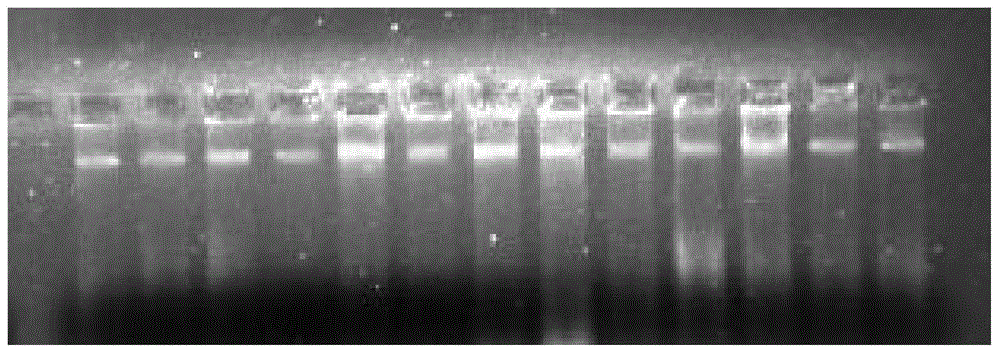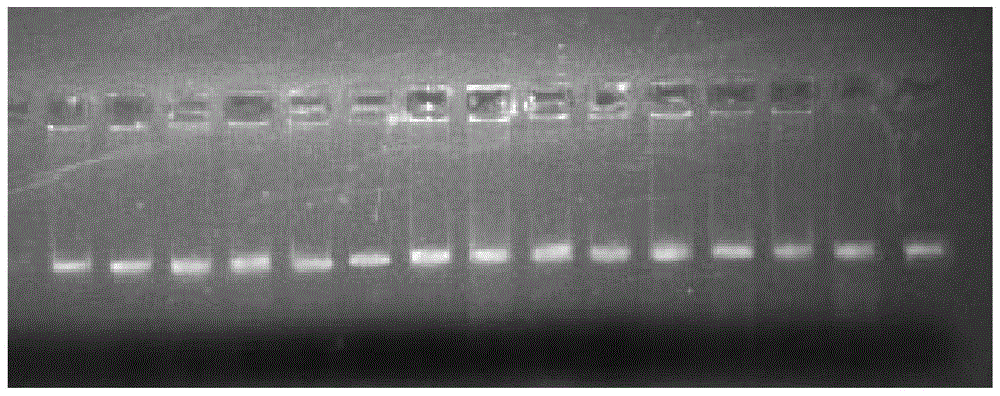A molecular method for rapid identification of closely related species of Juniperus
A technique for the genus and species of Juniperus, which is applied in the molecular field of rapid identification of related species of Juniperus, which can solve the problem of slow mutation rate, difficulty in accurately identifying and identifying related species of Juniperus, and inability to accurately distinguish gymnosperm related species species etc.
- Summary
- Abstract
- Description
- Claims
- Application Information
AI Technical Summary
Problems solved by technology
Method used
Image
Examples
Embodiment 1
[0079] A molecular method for the rapid identification of closely related species of Juniperus, comprising the steps of:
[0080] 1. For the dried leaves or seeds of the collected Juniper species, use the CTAB method to extract the total DNA of the leaves or the DNA of the endosperm of the seeds; the specific procedures are as follows:
[0081] 1) Take a mature seed of a naturally dried Juniperus species, smash the outer seed coat; soak the seed with distilled water for 10-24 hours, separate the haploid endosperm in the seed with tweezers, and store it in a refrigerator at 4°C;
[0082] 2) Grinding the endosperm or crushing the leaves: For the isolated haploid endosperm, put it into a pre-cooled mortar, put the endosperm of one seed together, add an appropriate amount of polyvinylpyrrolidone (PVP) powder and liquid nitrogen, and quickly Grind into fine powder; for dry leaves, directly weigh 0.02g with an electronic balance, then put them into a 2.0mL centrifuge tube together w...
Embodiment 2
[0135] Apply the present invention to the rapid molecular identification of Juniper related species: the leaves or seeds of the collected Juniper related species Qilian Junbai, Junubi densely branched, Xiaozi Junbai, Juniper square and Tibet Juniper, Carry out the extraction of DNA, and use the nuclear gene primer Chi1 provided by the present invention to carry out PCR amplification and sequencing of DNA samples, compare and analyze the difference between the measured sequence and the sequence of the present invention, and carry out the construction of all sequence phylogenetic trees and cluster analysis for molecular identification of Juniper species;
[0136] A molecular method for the rapid identification of closely related species of Juniperus, comprising the steps of:
[0137] 1. Extract the DNA of different individuals of Juniper, which are closely related species of Juniper genus Qilian, Juniper, Xiaozi, Fangzhi and Tibet;
[0138] Steps 1 to 6 are the same as Steps 1 to...
PUM
 Login to View More
Login to View More Abstract
Description
Claims
Application Information
 Login to View More
Login to View More - R&D
- Intellectual Property
- Life Sciences
- Materials
- Tech Scout
- Unparalleled Data Quality
- Higher Quality Content
- 60% Fewer Hallucinations
Browse by: Latest US Patents, China's latest patents, Technical Efficacy Thesaurus, Application Domain, Technology Topic, Popular Technical Reports.
© 2025 PatSnap. All rights reserved.Legal|Privacy policy|Modern Slavery Act Transparency Statement|Sitemap|About US| Contact US: help@patsnap.com



